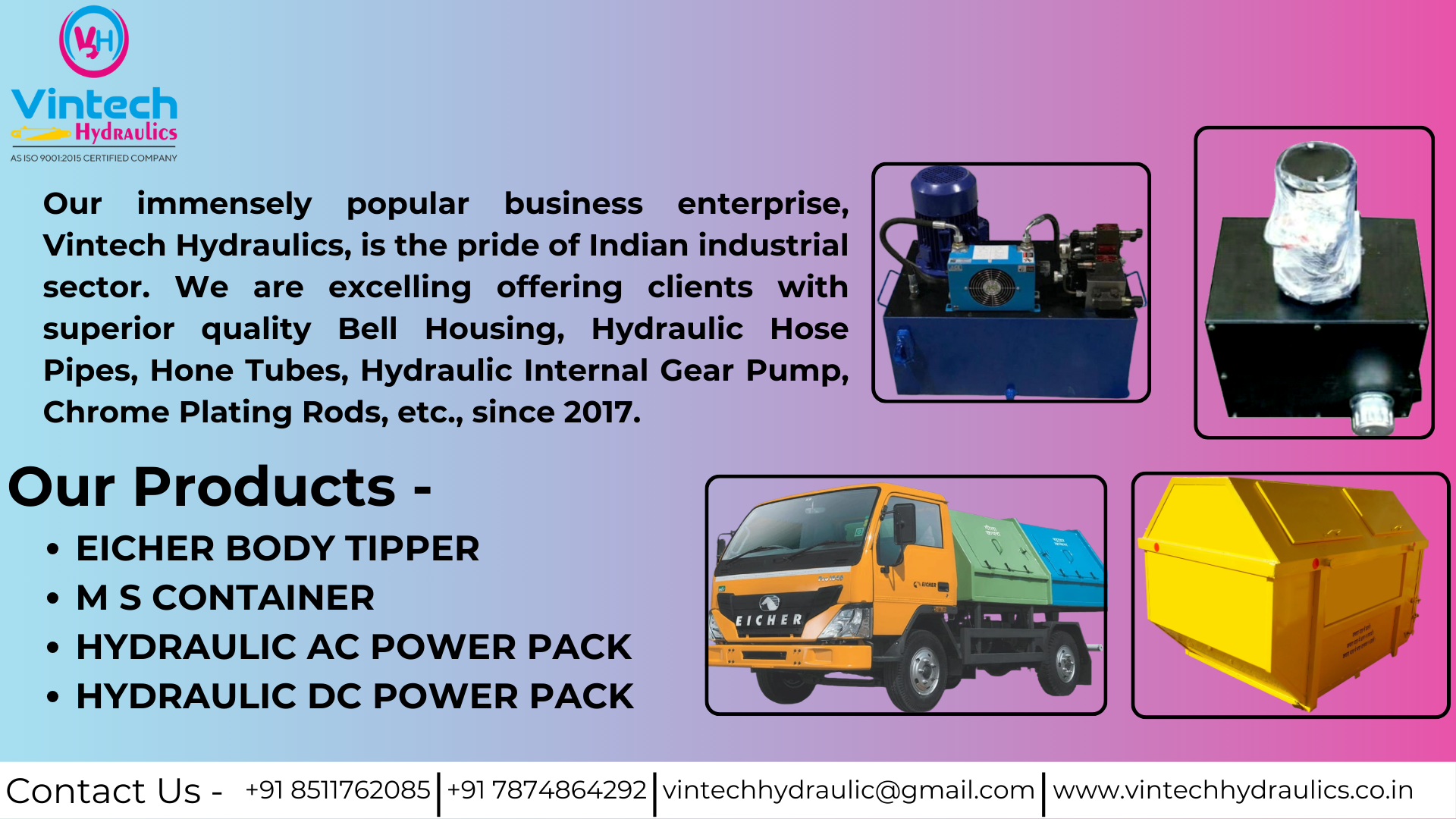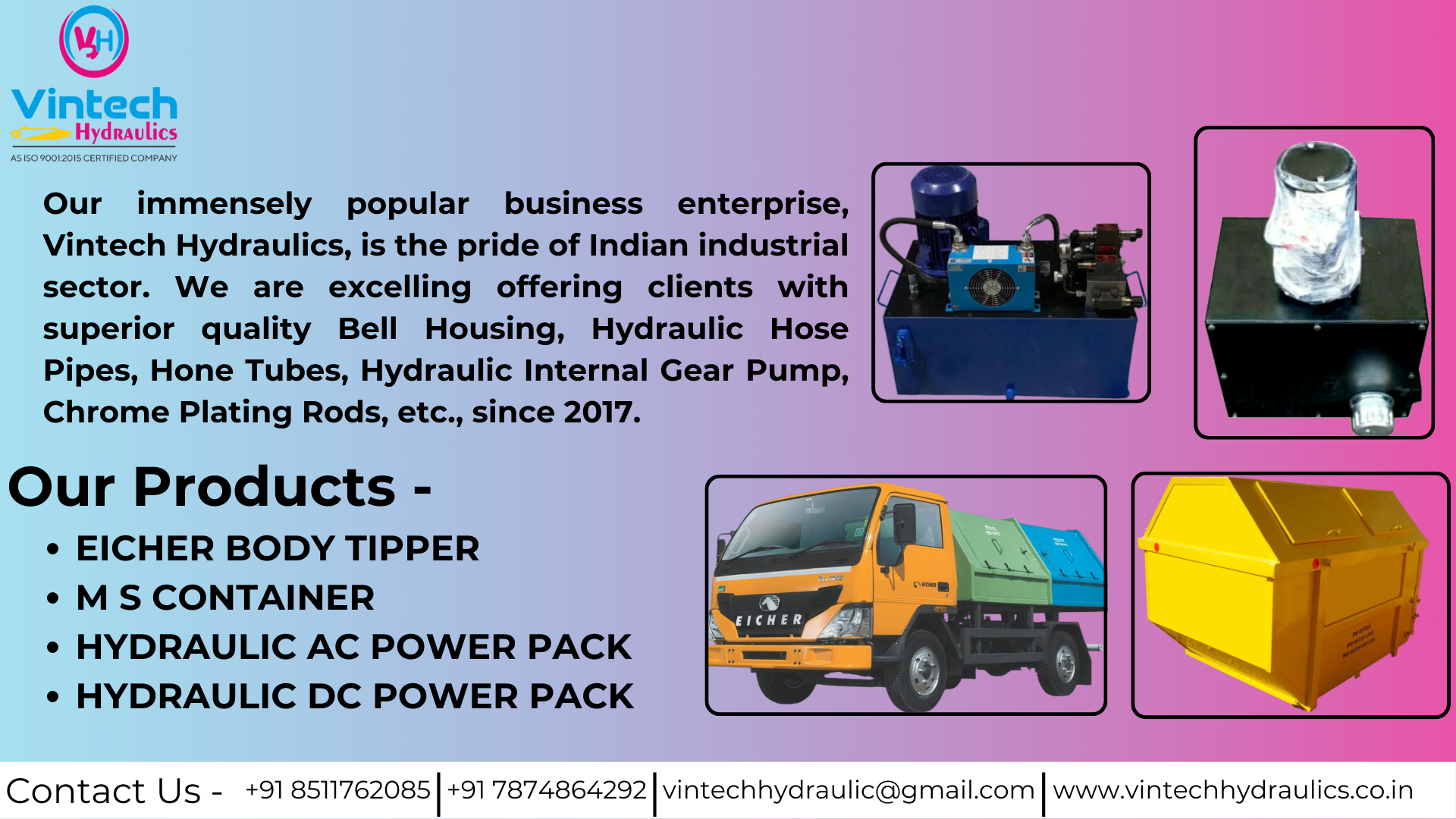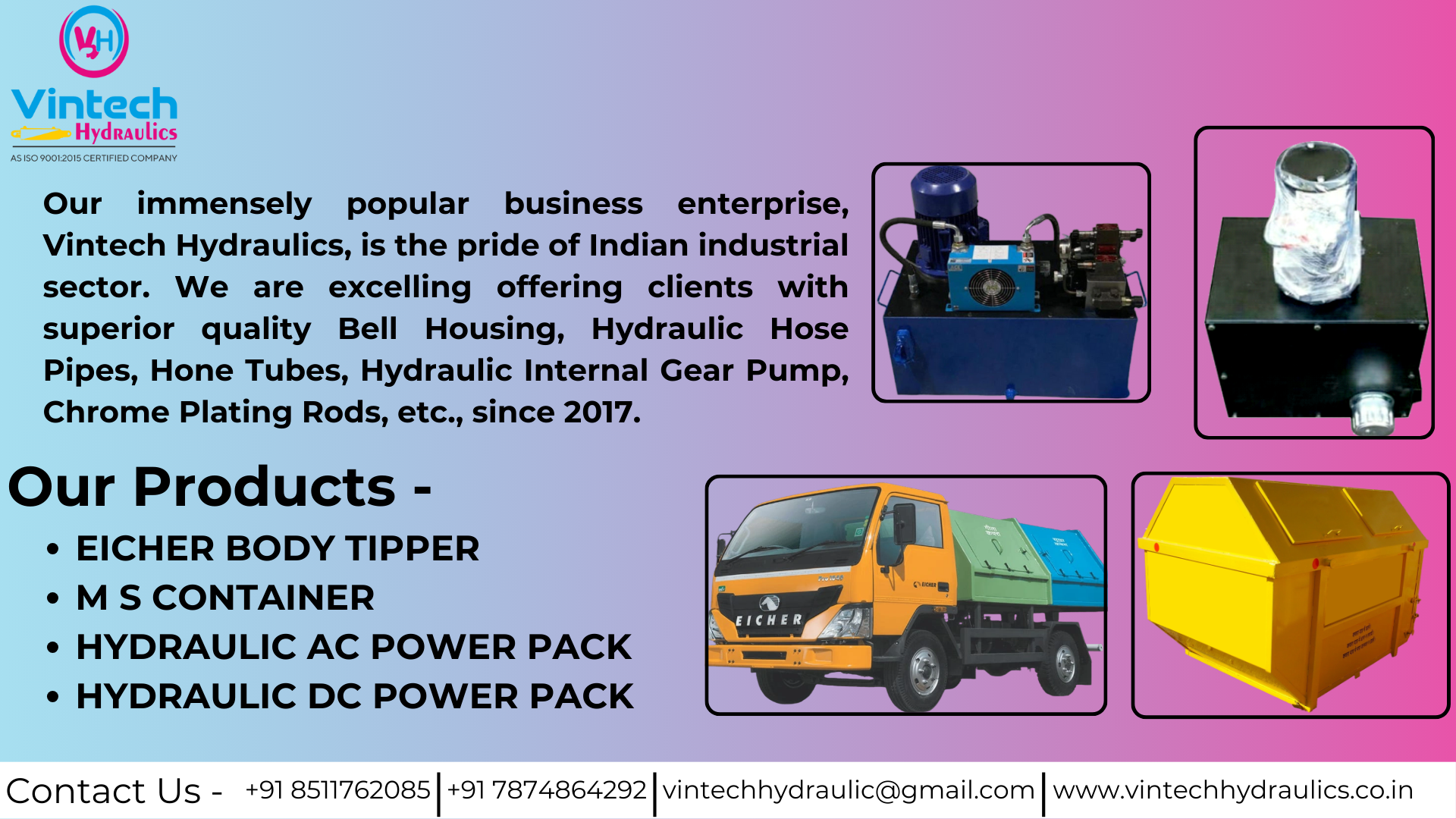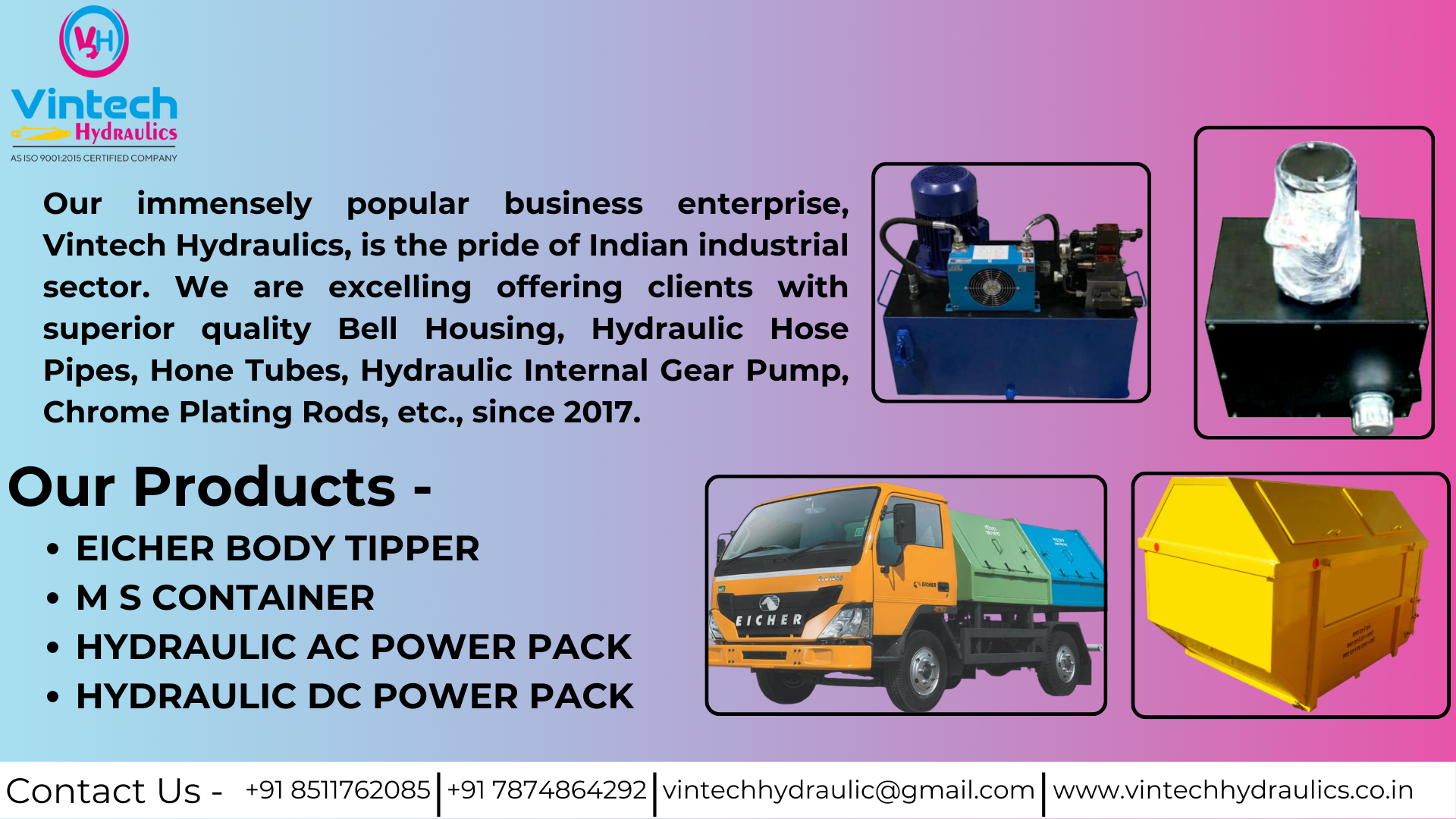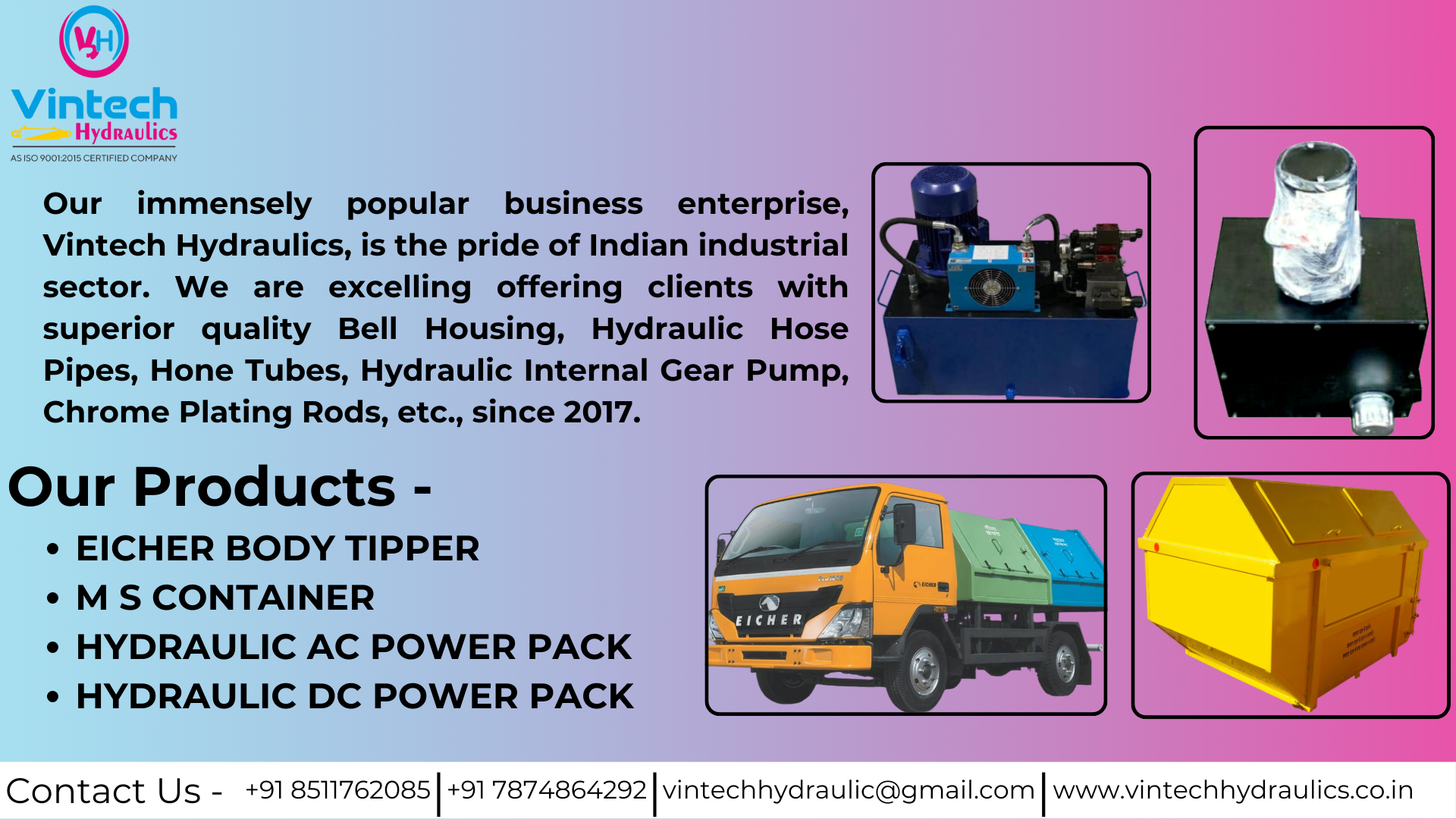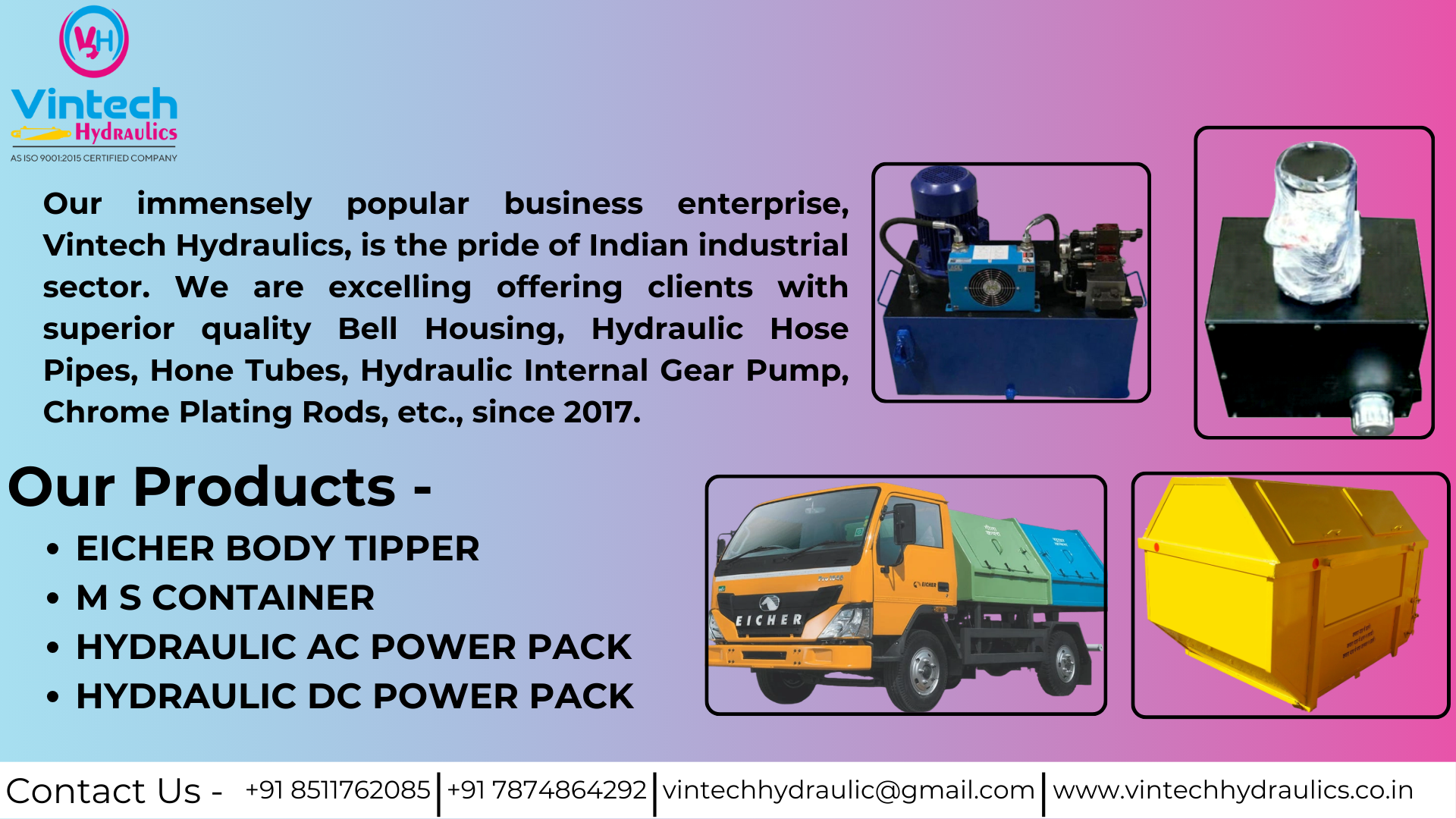
Hydraulic Power Pack
Hydraulic Power Pack
A Hydraulic Power Pack is a compact, self-contained unit that generates and supplies hydraulic energy to power various hydraulic systems and machinery. It typically consists of a hydraulic pump, electric motor, reservoir (tank), control valves, and filtration systems, all housed within a single frame.
How It's Made
The manufacturing process of a hydraulic power pack involves several key steps:
-
Design and Engineering: Engineers design the power pack based on the specific requirements of the application, considering factors like pressure, flow rate, and power source.
-
Component Selection: High-quality components such as pumps, motors, valves, and filters are selected to ensure reliability and performance.
-
Fabrication: The frame and reservoir are fabricated, often from mild steel or stainless steel, to house the components securely.
-
Assembly: All components are assembled, ensuring proper alignment and integration.
-
Testing: The assembled power pack undergoes rigorous testing to verify performance, pressure ratings, and leak integrity.
-
Quality Control: Final inspections are conducted to ensure the unit meets industry standards and customer specifications.
Applications
Hydraulic power packs are utilized across various industries, including:
-
Manufacturing: Powering machinery like presses, injection molding machines, and CNC machines.
-
Construction: Operating equipment such as cranes, excavators, and loaders.
-
Agriculture: Driving systems in tractors, harvesters, and irrigation equipment.
-
Marine: Powering winches, steering systems, and deck machinery.
-
Automotive: Used in vehicle lifts, hydraulic brakes, and suspension systems.
-
Railways: Operating track maintenance equipment and signaling systems.
Key Features
-
Compact Design: Space-saving units suitable for various installations.
-
Customizable: Tailored to meet specific application requirements.
-
High Efficiency: Optimized for energy consumption and performance.
-
Durability: Built with robust materials to withstand harsh operating conditions.
-
Advanced Controls: Incorporation of PLCs and sensors for precise operation.
Advantages
-
Reliability: Proven performance in demanding applications.
-
Cost-Effective: Reduced operational costs due to energy efficiency.
-
Versatility: Applicable across a wide range of industries and machinery.
-
Ease of Maintenance: Simplified servicing and component replacement.
-
Scalability: Available in various sizes and capacities to suit different needs.
Significance
Hydraulic power packs play a crucial role in modern industrial operations by:
-
Enhancing Productivity: Enabling efficient and automated machinery operation.
-
Supporting Innovation: Facilitating the development of advanced hydraulic systems.
-
Promoting Sustainability: Contributing to energy-efficient and environmentally friendly practices.
-
Driving Economic Growth: Supporting key industries that contribute to economic development.
FAQs
Q1: What is the typical lifespan of a hydraulic power pack?
A1: With proper maintenance, hydraulic power packs can last between 10 to 20 years.
Q2: How often should a hydraulic power pack be serviced?
A2: Regular maintenance is recommended every 6 to 12 months, depending on usage and operating conditions.
Q3: Can hydraulic power packs be customized?
A3: Yes, manufacturers offer customization options to meet specific application requirements.
Q4: What are common issues with hydraulic power packs?
A4: Common issues include leaks, overheating, and pump failure, often due to lack of maintenance or contamination.
Q5: Are there energy-efficient hydraulic power packs available?
A5: Yes, many manufacturers design energy-efficient models to reduce operational costs.
Conclusion
Hydraulic power packs are integral components in various industries, providing reliable and efficient hydraulic power to machinery and systems. Their versatility, durability, and customization options make them essential for modern industrial operations. By understanding their features, advantages, and applications, businesses can make informed decisions when selecting hydraulic power packs to meet their specific needs.
